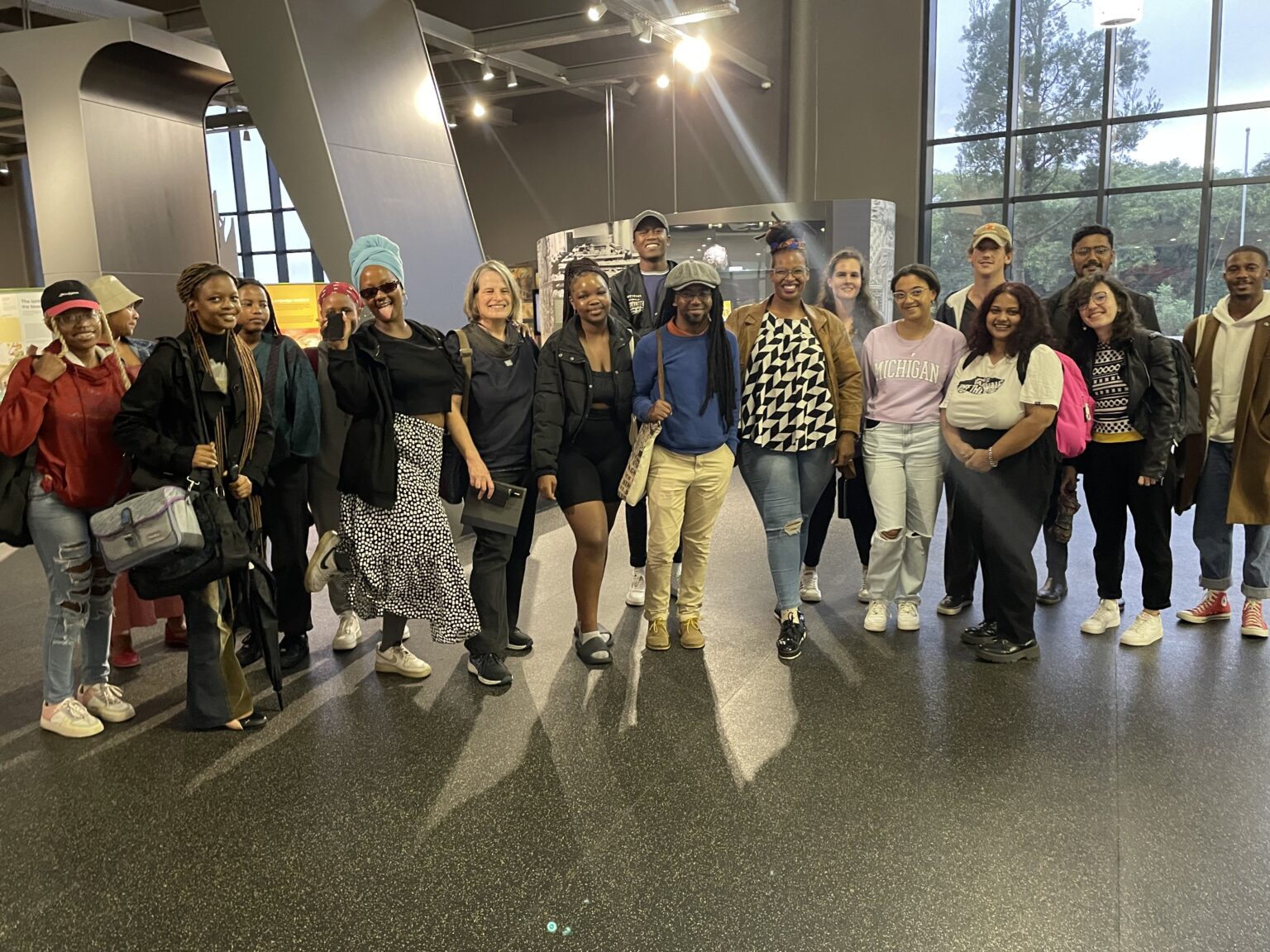By Buhle Andisiwe Made and Selenathi Botha
The Amazwi South African Museum of Literature screened two important works on 23 March – award-winning filmmaker Sara CF de Gouveia’s The Sound of Masks, and Sikhumbuzo Makandula’s six-minute film, Isigidimi.
The Sound of Masks follows legendary Mapiko dancer, Atanásio Nyusi of Mozambique, and has now become a tribute to Nyusi after his death in November 2022. The film depicts the Mapiko dancers from the Makonde people in Mozambique. de Gouveia decided to create such a film after she grew up in Portugal and noticed how her home country relayed a representation of Mozambique that was at odds with reality.
“We didn’t learn anything about the local cultures, which is strange when you think that the two countries have such a vast shared history,” she said. With an interest in the legacy of Portuguese colonialism in Mozambique, when she met Nyusi in Cape Town where he was performing at the Out of the Box festival, she saw an opportunity to collaborate with him.
Nyusi went on to narrate The Sound of Masks. As a Mapiko dancer himself, Nyusi was able to communicate with Mozambican Mapiko dancers. de Gouveia says that without the assistance of Nyusi, it would have been difficult for her to communicate with the dancers.
Mapiko dancers transmit Mokonde values through movement. The dances tell stories using masks, theatrical elements, specific dance steps, and music. These tales sometimes discuss routine tasks and gender roles in society, but also represent political beliefs or serve as satire.
Nyusi narrates the whole documentary, recounting anecdotes of his life. De Gouveia said she would appreciate it if audiences would connect with Nyusi and his story, and learn something new from it.
Khalid Shamis, who edited the film, described it as a lyrical deep dive into the history of war dance in one country. Editing The Sound of Masks over almost eight weeks was another great experience, he said, emphasising his sadness at Nyusi’s death and his wish for the film to celebrate Nyusi’s life.
The next film screened at this event was Sikhumbuzo Makandula’s six-minute noir film, Isigidimi – which portrays a lonesome man walking around spaces at the former Ciskei Bantustan’s then-national monument: Ntaba kaNdoda, which was erected in 1981 in Dimbaza by the Bantustan leader of that time, Lennox Sebe. The film expressed a similar relationship between political narratives and displacement. Makandula, a visual artist and photography lecturer at Rhodes University, spoke of his film as grappling with the existence of the Ciskei Bantustan.
Filmed at Ntaba kaNdoda, Isigidimi is different from The Sound of Masks because of the colour grading and sound embodied within it. Using 5D Mark III and Sony HD video cameras to produce the film, audiences are captured by the aesthetics of the black and white medium.
The film’s focus is on visual representation rather than narration, using sonics of ukungqokola and imilozi, translated as gruff singing, producing sounds from the back of the throat and whistles. An additional sound is infused and subjugated – the sound produced by a cluster of bottle tops combined to generate a specialised sound. As the lonesome male figure moves around the land, he subtly moves the rope he is holding to create a loud and individual sound.
Trailing around the land, following the male figure, is a person draped in a lengthy, black, long-sleeved robe and metallic headgear, which distinctly reflected the light and created an aesthetically pleasing image.
The audience benefitted from the deep depiction of history portrayed in the films, with many saying how they appreciated docLOVE’s presentations of artistic and educational documentaries.


